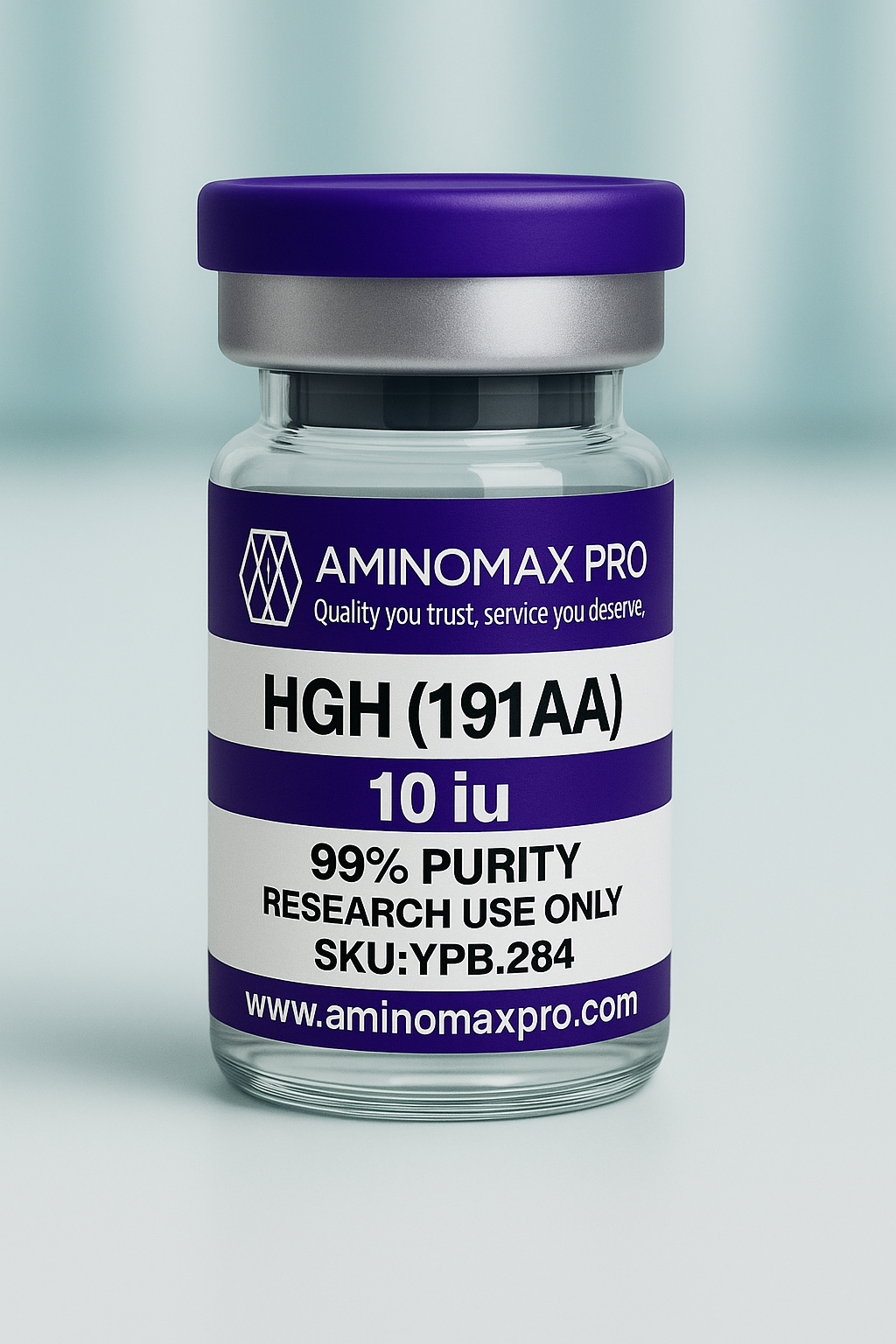Description
HGH (191AA) – Advanced Biochemical Mechanism Profile
(Recombinant Human Growth Hormone – Somatotropin, 191 Amino Acids)
Recombinant HGH (191AA) is structurally identical to endogenous pituitary somatotropin. Its biological effects are mediated through the Growth Hormone Receptor (GHR), a class I cytokine receptor. Unlike GPCRs, GHR signals primarily via JAK2/STAT, MAPK, and PI3K/Akt pathways, leading to transcription of anabolic and metabolic genes.
✅ 1. Primary Receptor Target
Growth Hormone Receptor (GHR)
-
Class: Cytokine receptor superfamily (not GPCR)
-
Mechanism: Ligand-induced receptor dimerization
Mechanistic sequence:
-
HGH binds monomeric GHR
-
Receptor dimerizes
-
JAK2 (Janus kinase 2) autophosphorylates
-
JAK2 phosphorylates intracellular GHR tyrosines
-
Recruitment and activation of STAT transcription factors
✅ 2. Core Intracellular Signaling Cascades
A. JAK2 → STAT5 Pathway (Primary)
-
STAT1/3/5 are phosphorylated
-
Translocate to nucleus
-
Bind GAS promoter elements
-
Induce transcription of anabolic and metabolic genes
Key gene targets measured in research:
-
IGF-1 (Insulin-like Growth Factor-1)
-
ALS (Acid Labile Subunit)
-
CIS/SOCS proteins (feedback regulators)
-
STAT5-responsive muscle growth genes
B. PI3K → Akt / mTOR Pathway
-
GHR → IRS-1/2 phosphorylation
-
Recruitment of PI3K
-
Activation of Akt, mTOR, p70S6K, 4E-BP1
-
Supports protein synthesis and cellular growth processes
Gene targets:
-
mTOR-regulated protein translation genes
-
SREBP1 and metabolic regulators
-
PGC-1α (metabolic coactivator)
C. Ras/Raf → ERK1/2 MAPK Pathway
-
GHR recruits Shc/Grb2/SOS
-
Activates Ras → Raf → MEK1/2 → ERK1/2
-
Increases mitogenic gene transcription
MAPK-responsive genes:
-
FOS, JUN, EGR1
-
Cyclins involved in cell-cycle progression
✅ 3. IGF-1 Axis (Endocrine & Autocrine)
HGH induces hepatic and peripheral production of IGF-1, which then activates its own receptor (IGF-1R, a receptor tyrosine kinase).
IGF-1R signals via:
-
IRS-1/2 → PI3K → Akt
-
Ras/MAPK
-
mTOR complex activation
Gene-level outputs:
-
Myogenic regulatory factors (e.g., MYOD1, MYOG)
-
COL1A1 and extracellular matrix remodeling genes
-
Anti-apoptotic BCL2-family genes
✅ 4. Second Messengers & Enzymes Involved
| Component | Role in HGH Signaling |
|---|---|
| JAK2 | Receptor phosphorylation, STAT recruitment |
| STAT5 | Major transcription factor regulating IGF-1 |
| IRS-1/2 | Links GHR to PI3K/Akt |
| PI3K | Membrane PIP3 generation |
| Akt | Growth, survival, glucose signaling |
| mTOR | Protein synthesis, ribosomal activation |
| ERK1/2 | Mitogenic transcription |
✅ 5. Key Gene Targets Frequently Measured in Studies
| Functional Area | Representative Genes |
|---|---|
| Growth / Anabolism | IGF-1, ALS, GH receptor (feedback), STAT5 targets |
| Protein Synthesis | mTOR, p70S6K, 4EBP1 |
| Glucose Metabolism | IRS1, IRS2, GLUT4 |
| Cell Survival | BCL2, MCL1, survivin |
| MAPK-regulated transcription | FOS, JUN, EGR1 |
✅ Receptor Kinetics
-
Receptor dimerization-dependent activation
-
Rapid STAT phosphorylation within minutes
-
Secretion of IGF-1 provides prolonged downstream signaling
Research-Only Use Classification
HGH (191AA) is provided exclusively for in-vitro laboratory research.
It is not approved for human or animal administration, consumption, injection, or therapeutic or diagnostic use.


